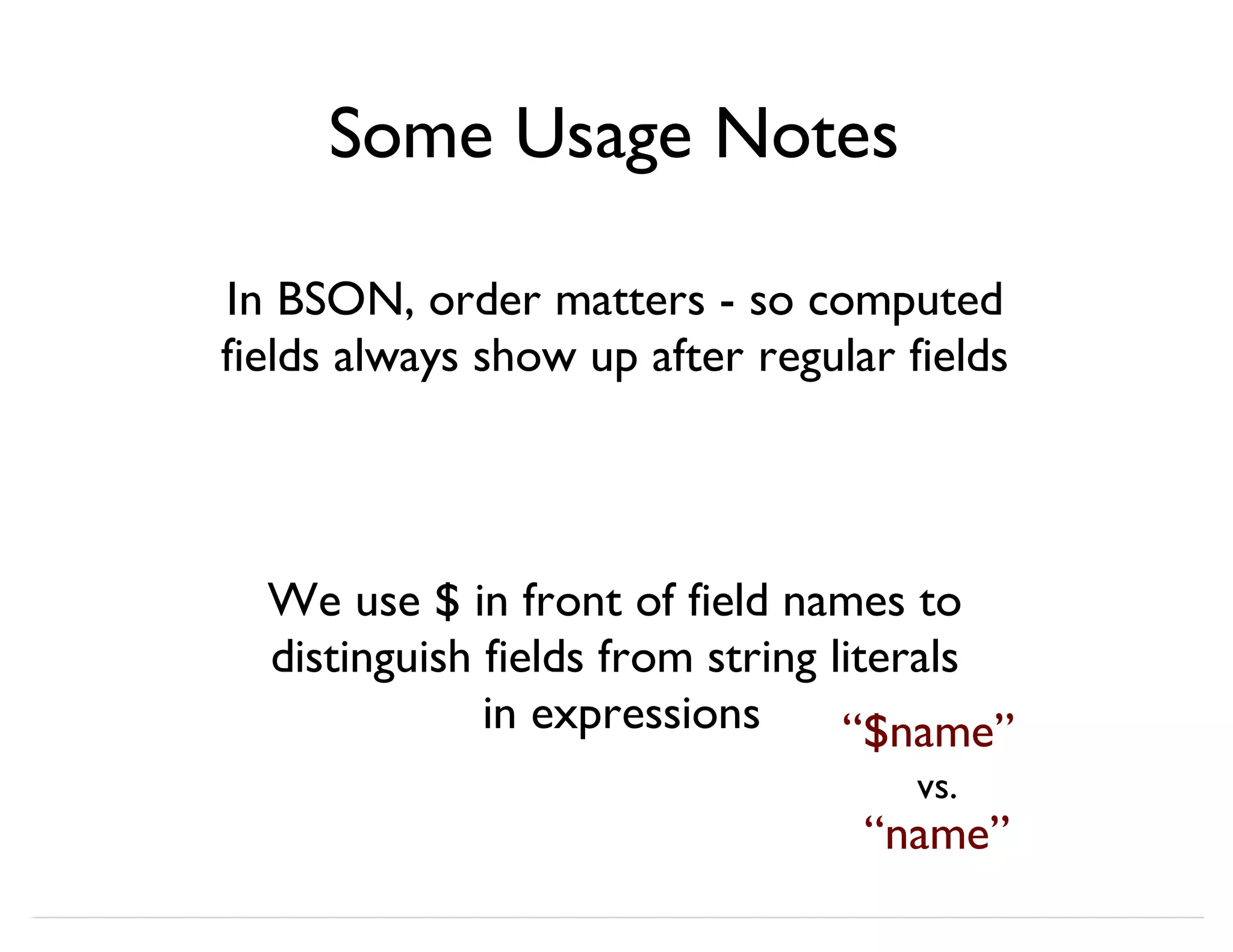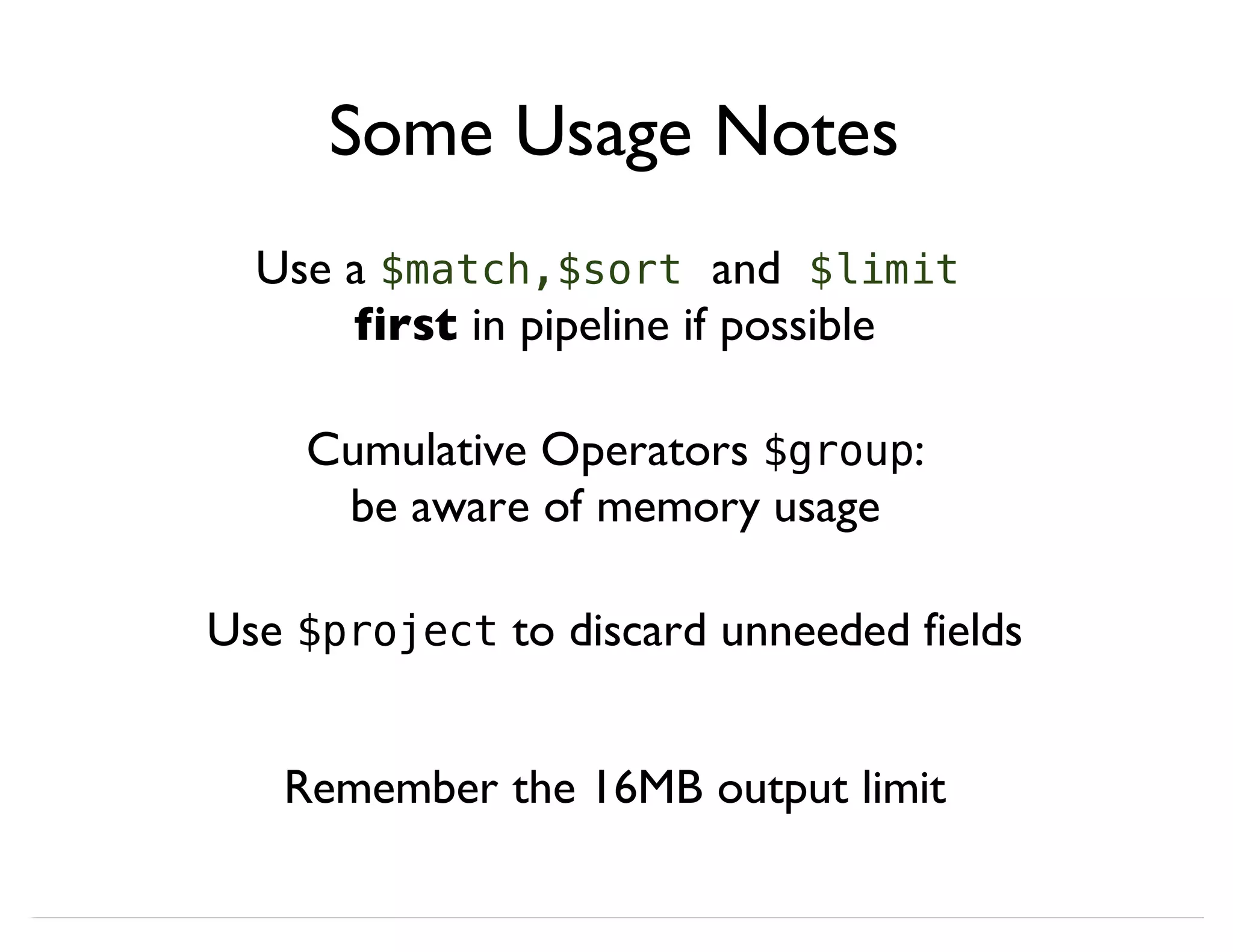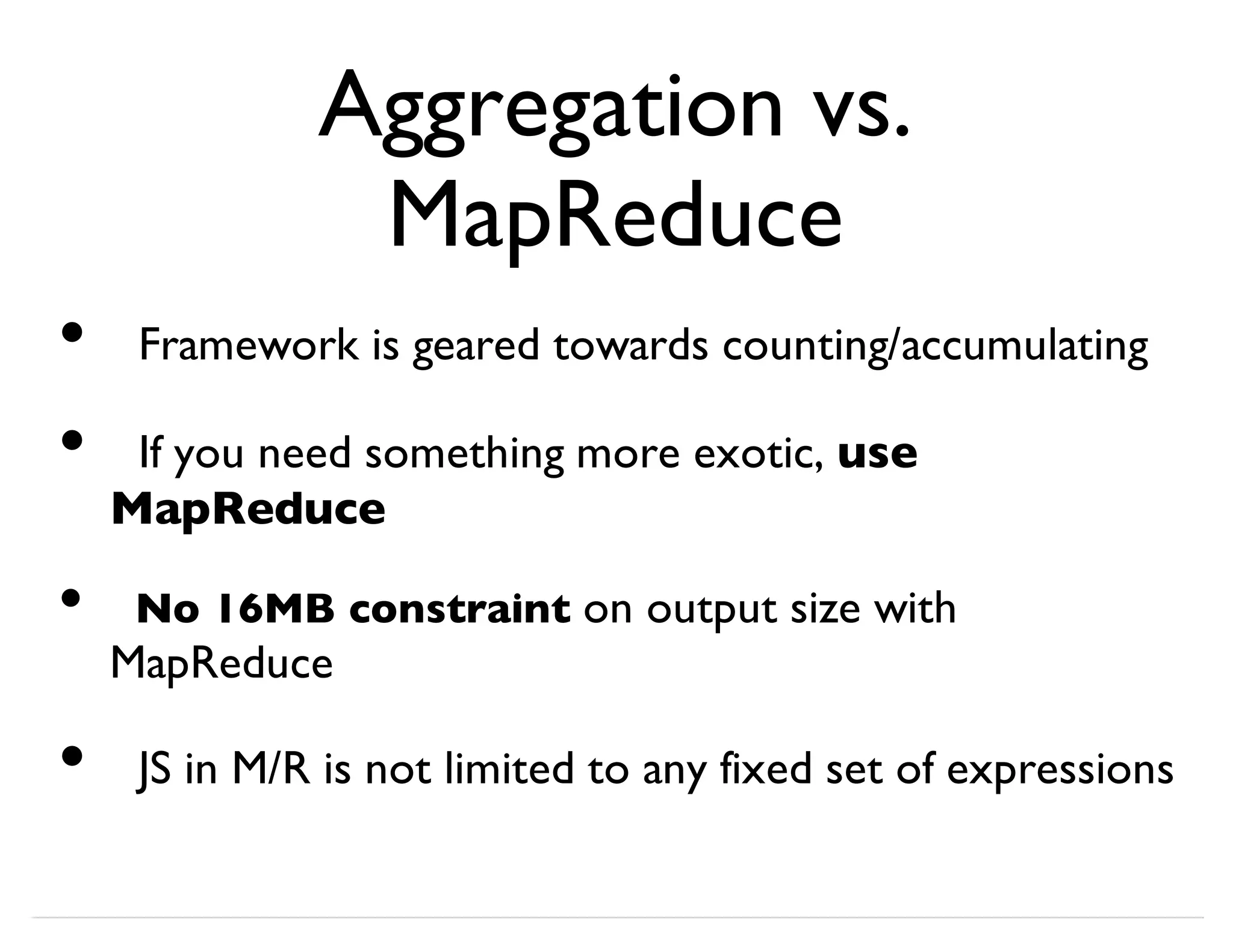The document provides an overview of MongoDB's aggregation framework, highlighting its advantages over traditional map/reduce methods for data aggregation and querying. It details various pipeline operators such as $match, $unwind, and $group, along with examples of usage and syntax. The framework allows for efficient data manipulation and eliminates the need for extensive JavaScript coding, offering declarative operations directly in the database.

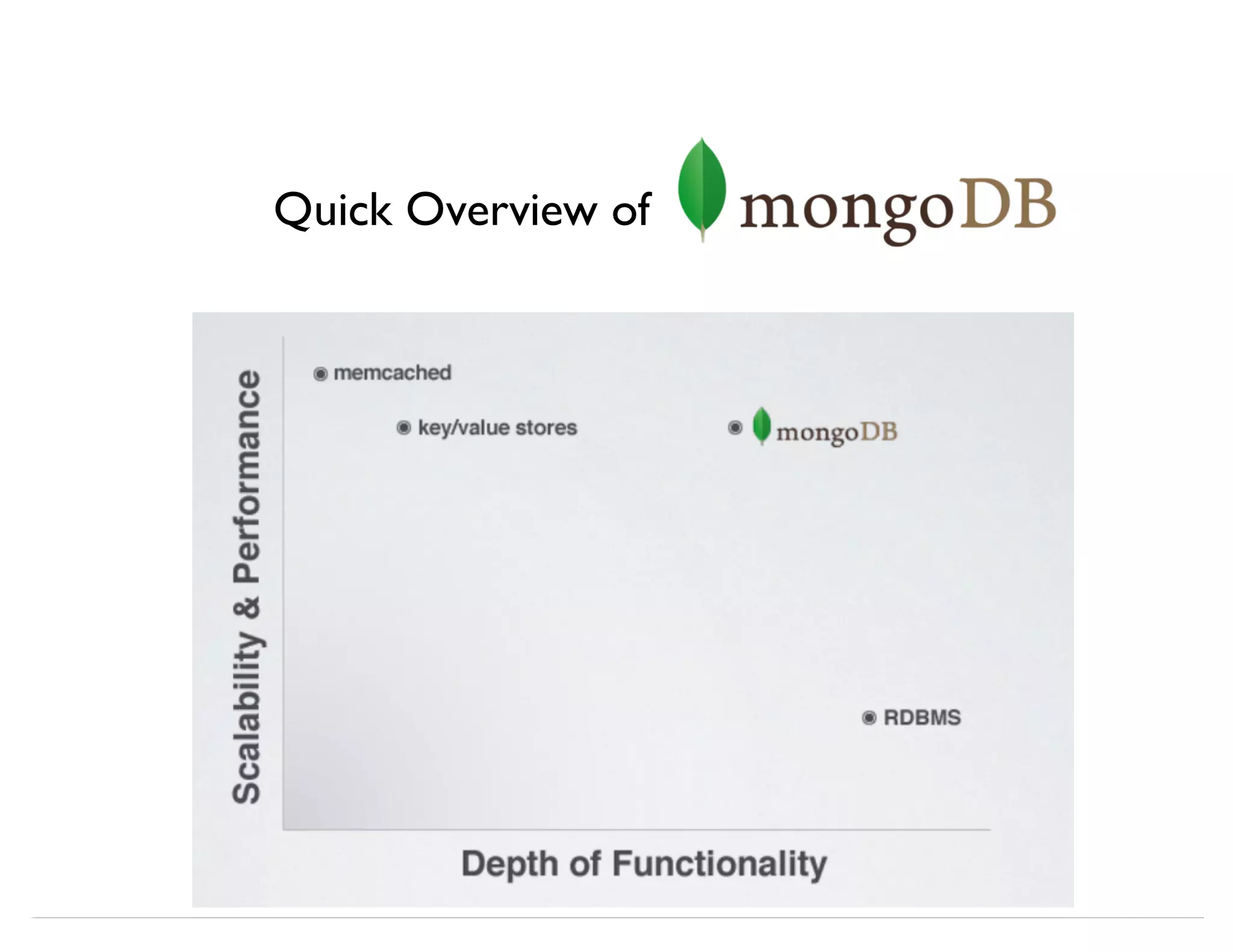
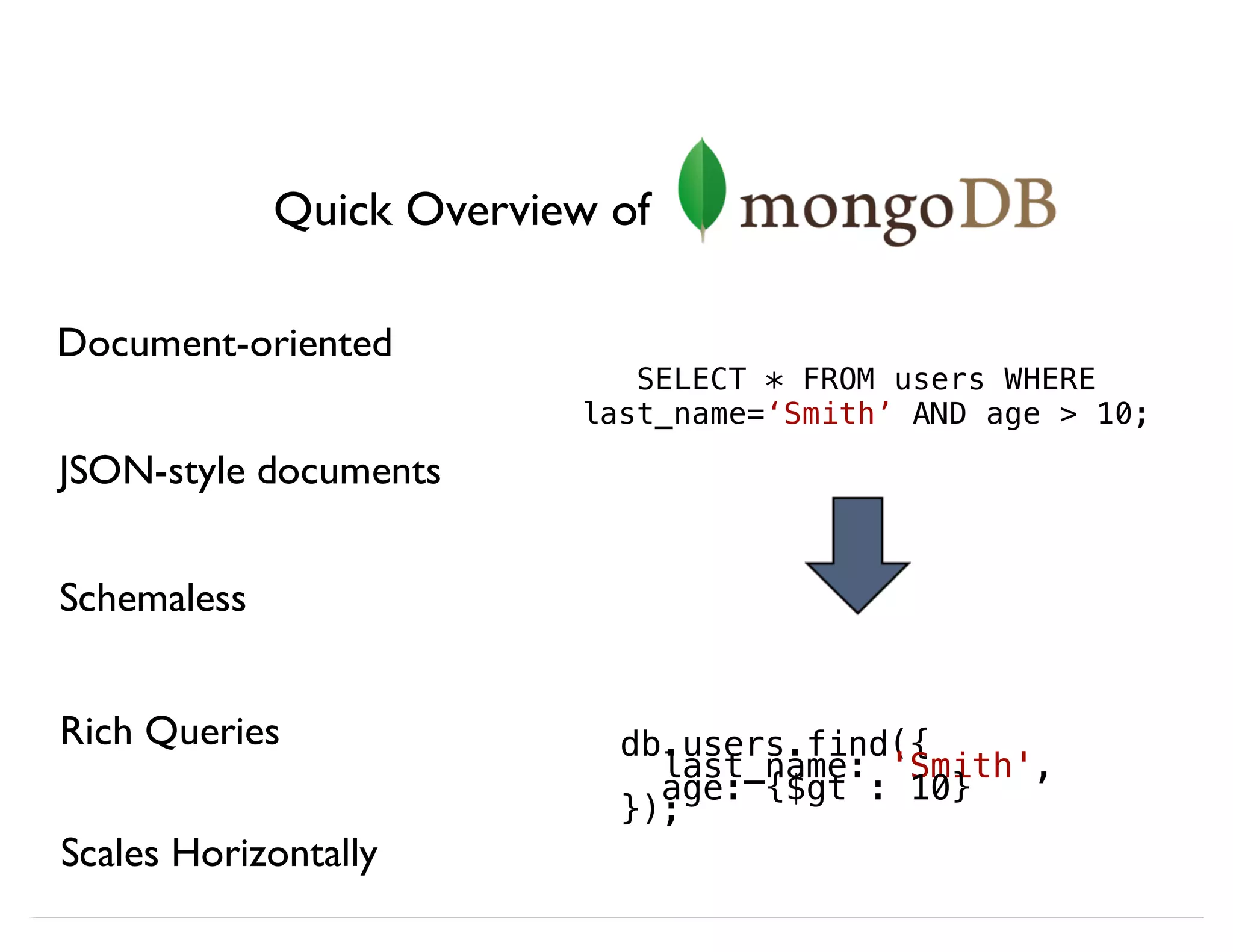
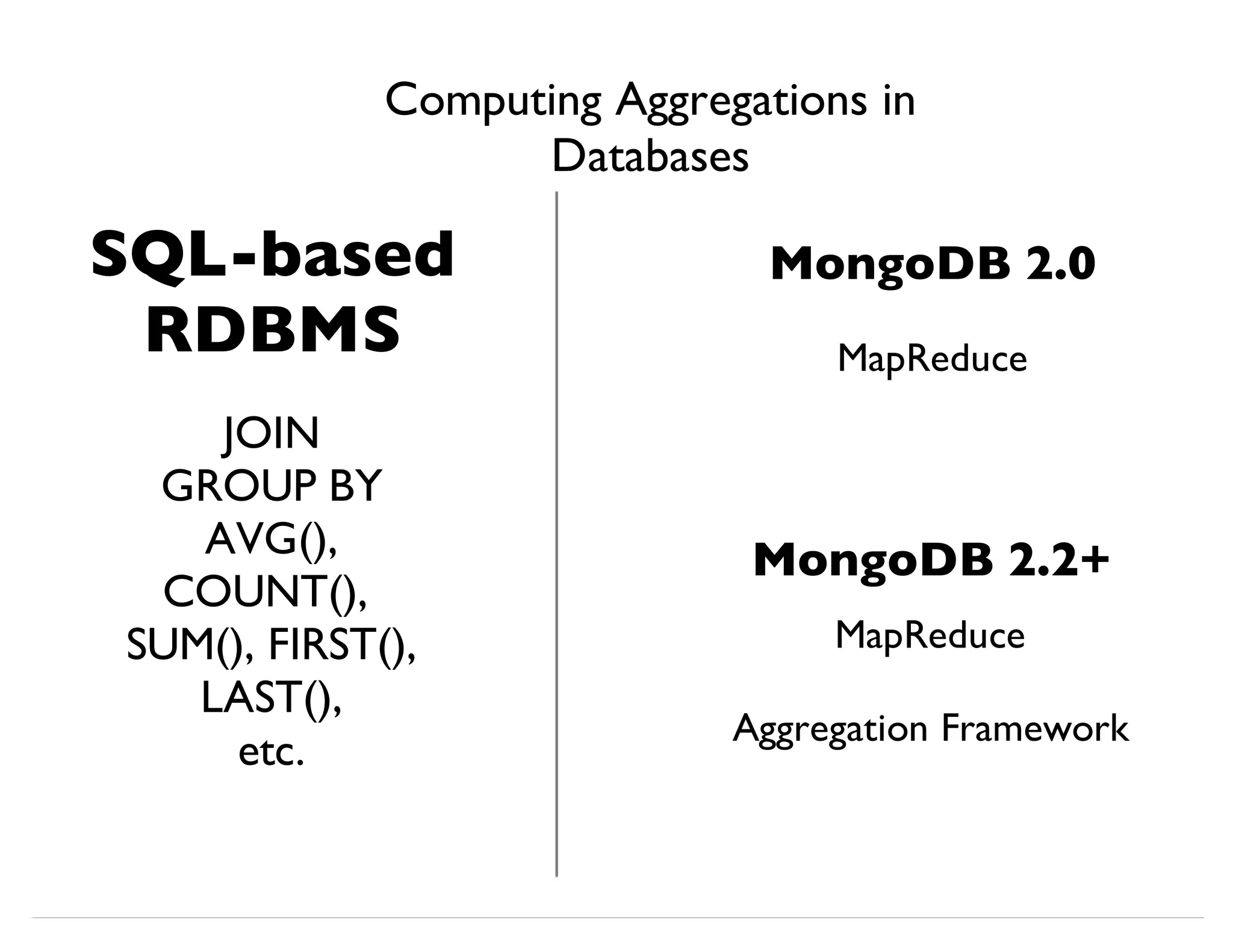
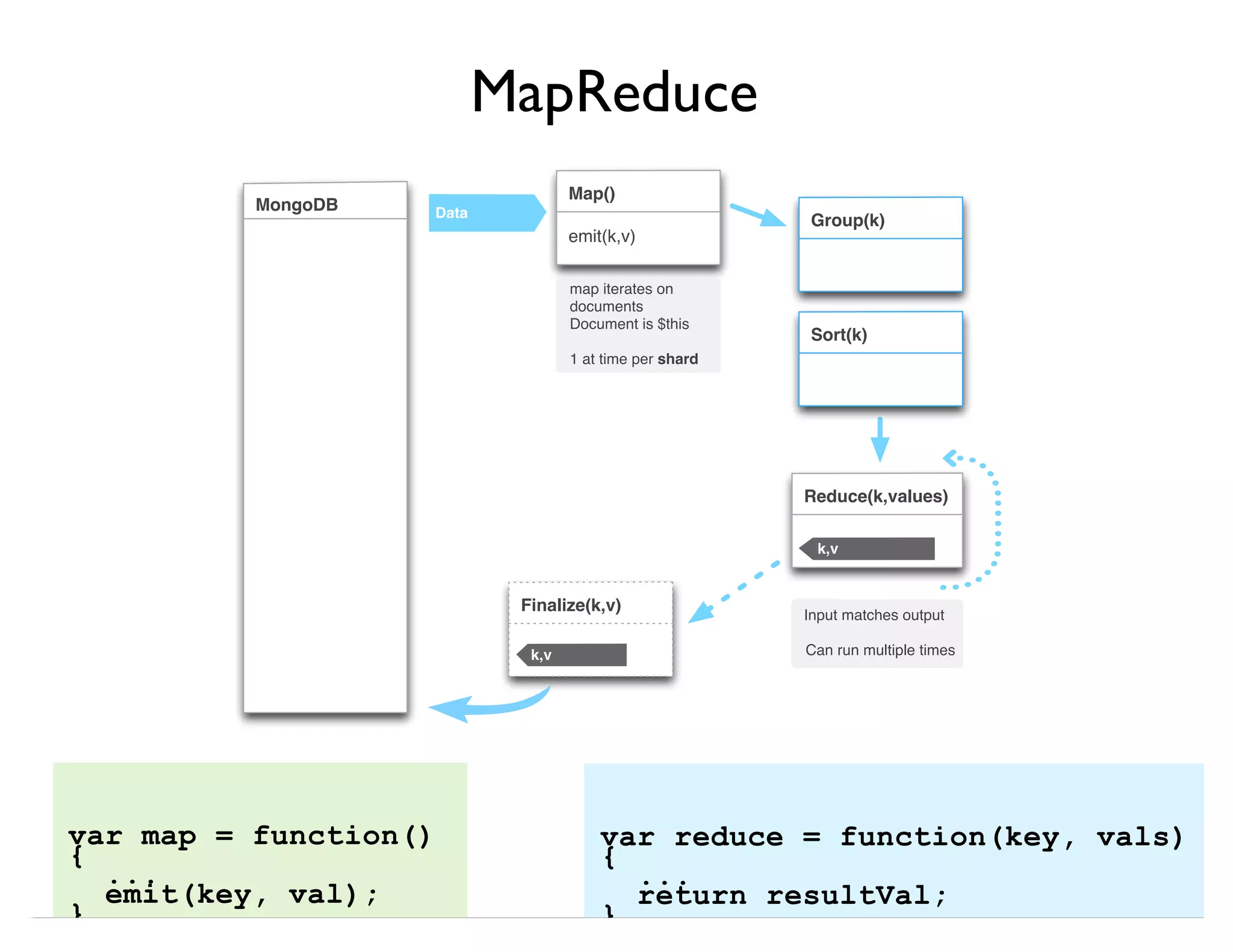
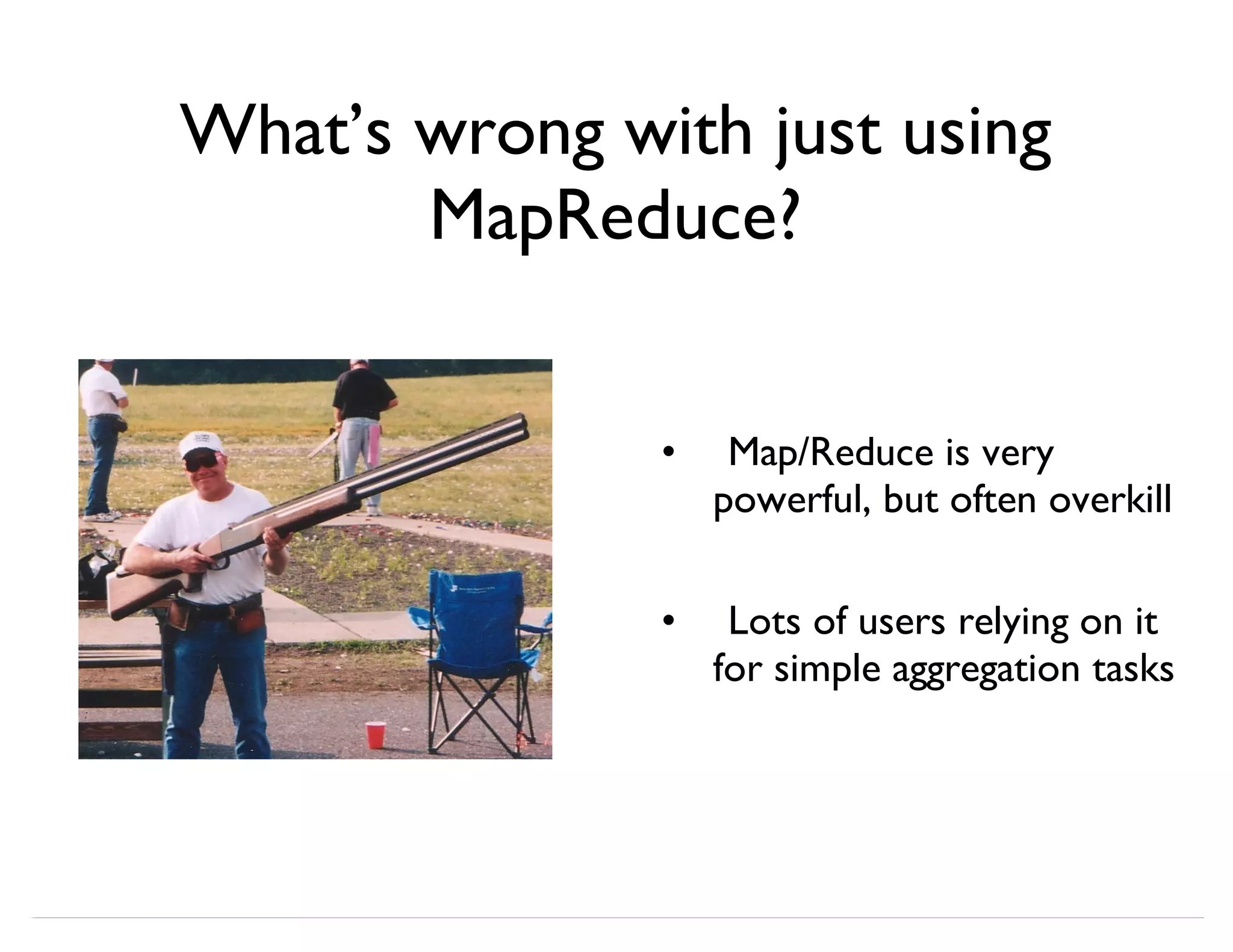

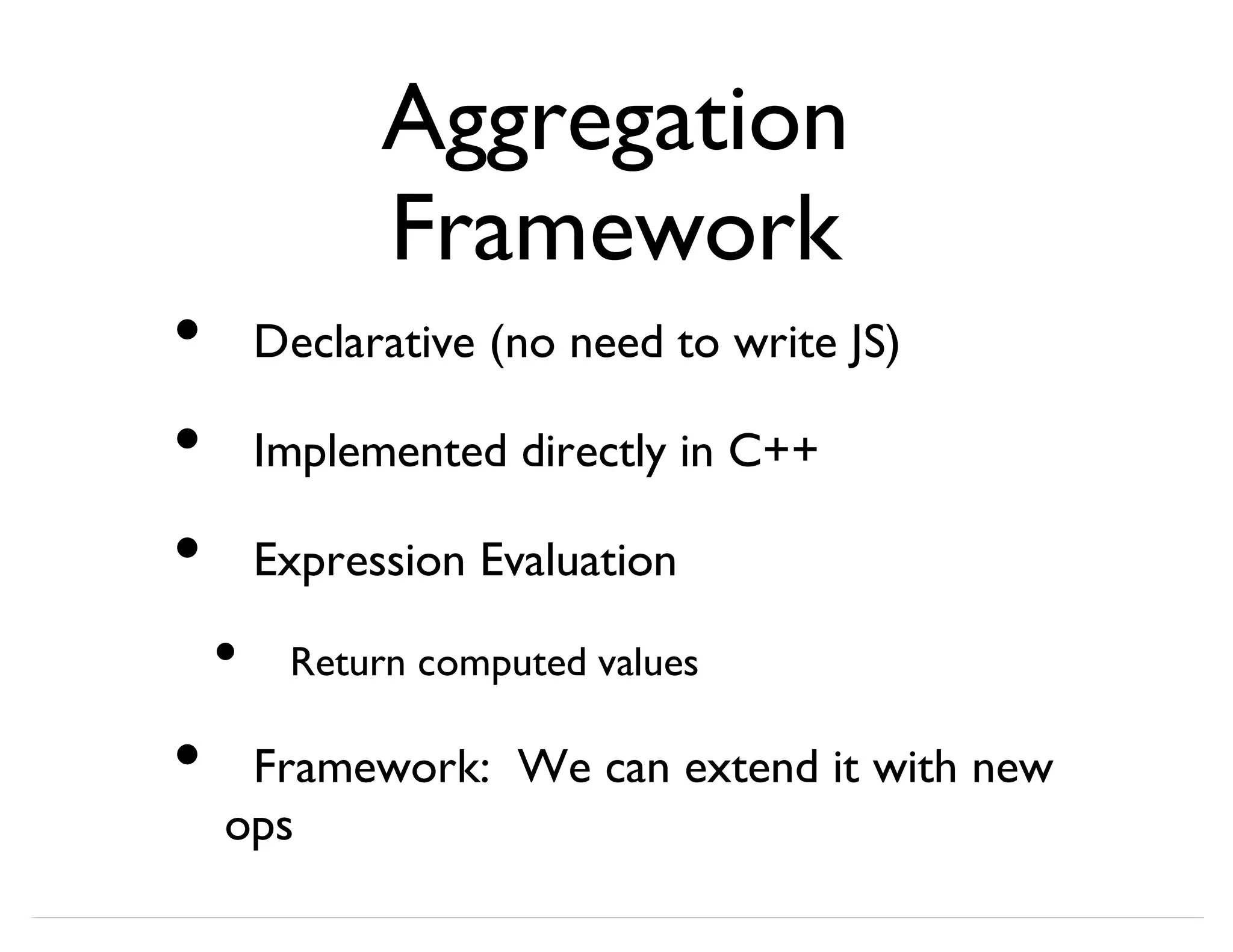
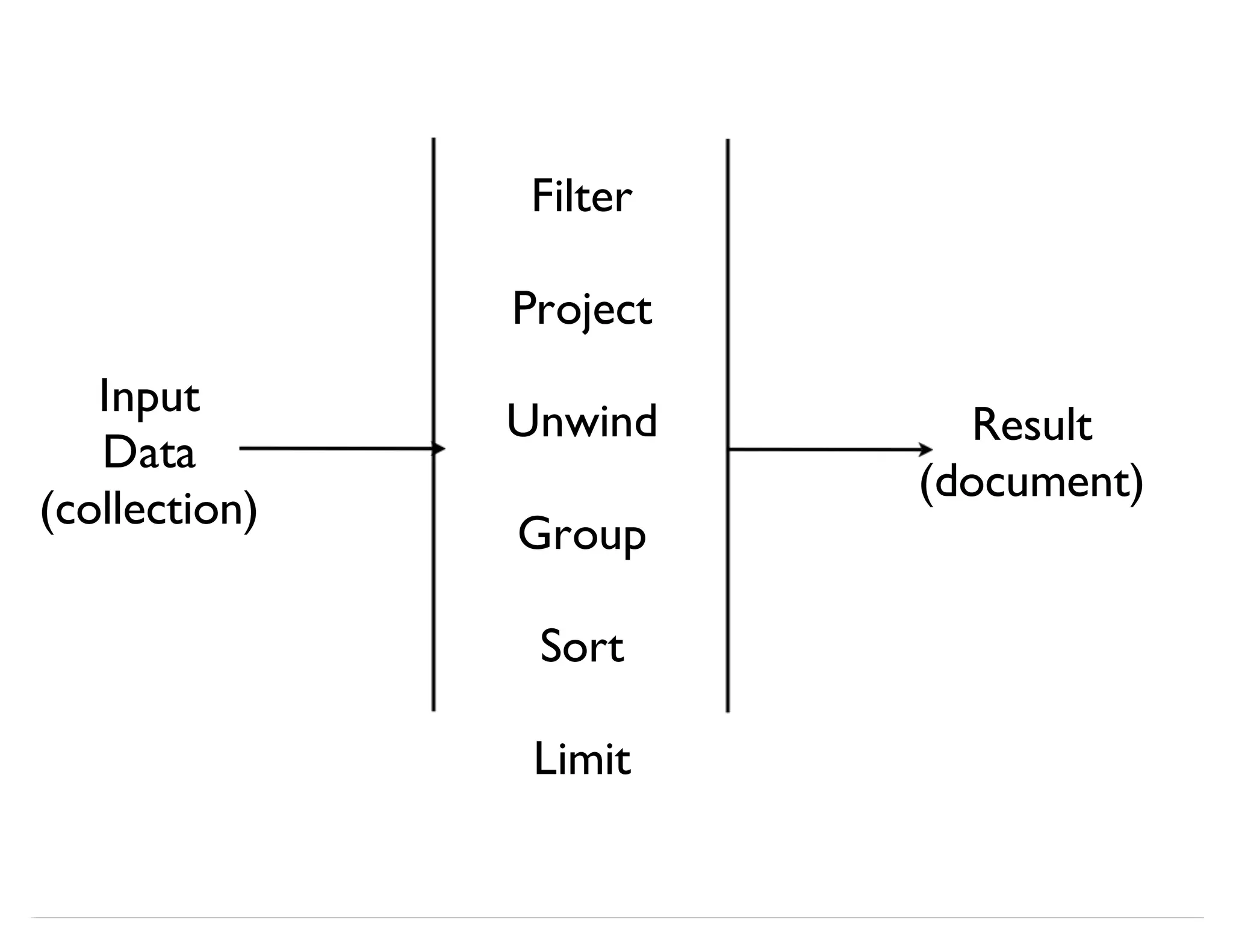
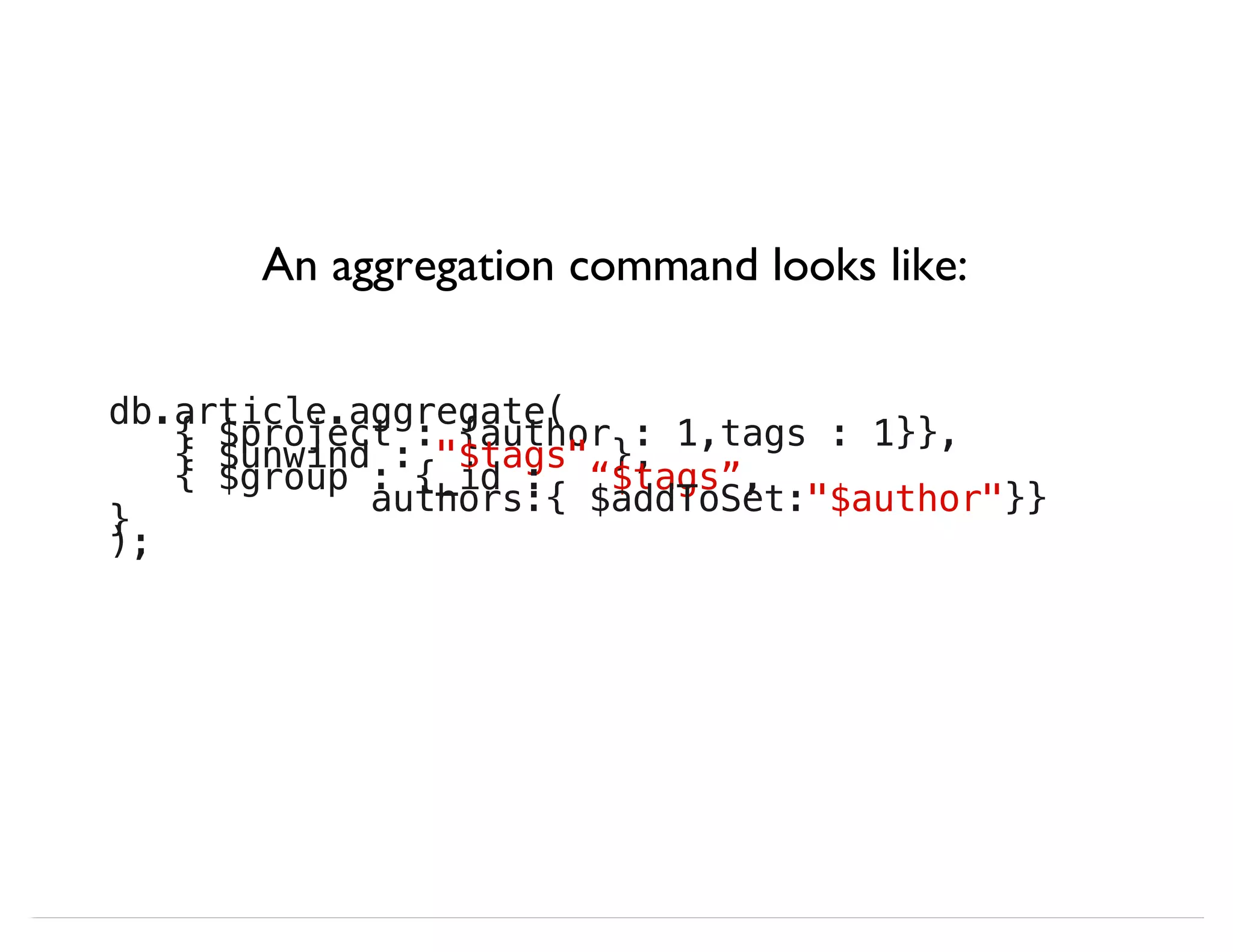
![db.article.aggregate( { $project : {author : 1, tags : 1}}, { $unwind : "$tags" }, { $group : { _id : “$tags”, authors : { $addToSet:"$author"} }} ); New Helper Method: .aggregate() Operator pipeline db.runCommand({ aggregate : "article", pipeline : [ {$op1, $op2, ...} ] }](https://image.slidesharecdn.com/mongodb-aggregation-130611150658-phpapp01/75/MongoDB-Aggregation-Framework-11-2048.jpg)
![{ "result" : [ { "_id" : "art", "authors" : [ "bill", "bob" ] }, { "_id" : "sports", "authors" : [ "jane", "bob" ] }, { "_id" : "food", "authors" : [ "jane", "bob" ] }, { "_id" : "science", "authors" : [ "jane", "bill", "bob" ] } ], "ok" : 1 } Output Document Looks like this: result: array of pipeline output ok: 1 for success, 0 otherwise](https://image.slidesharecdn.com/mongodb-aggregation-130611150658-phpapp01/75/MongoDB-Aggregation-Framework-12-2048.jpg)
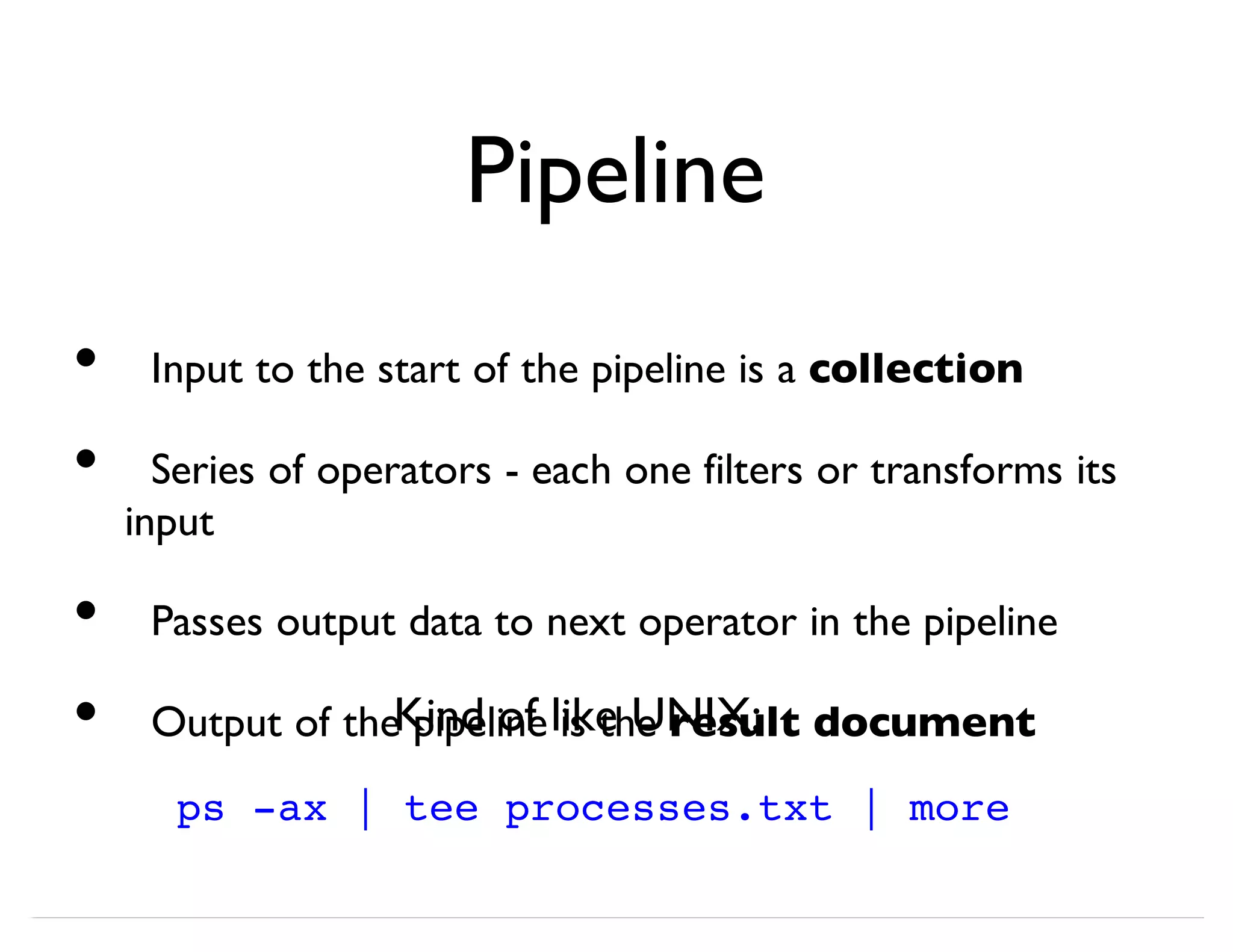
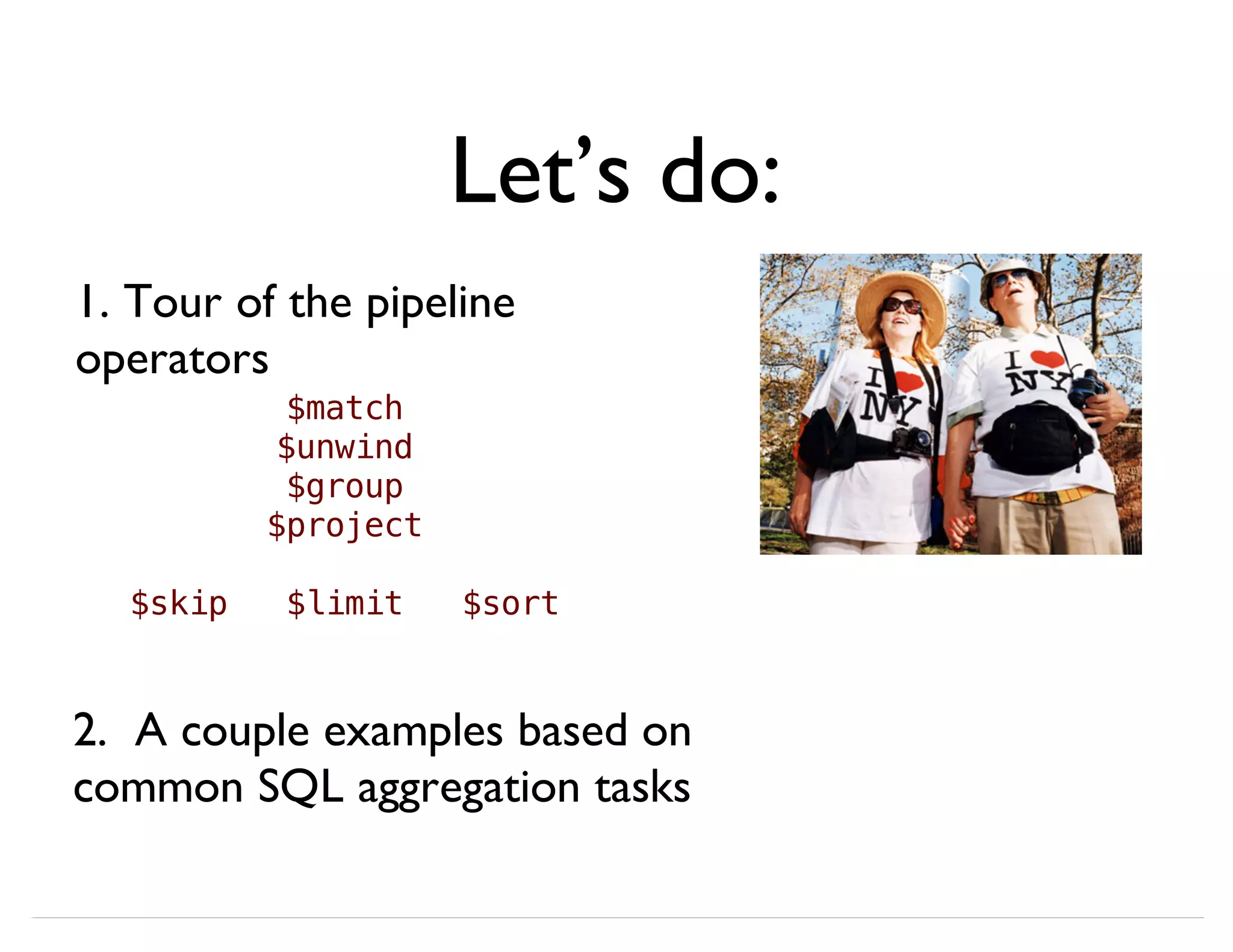
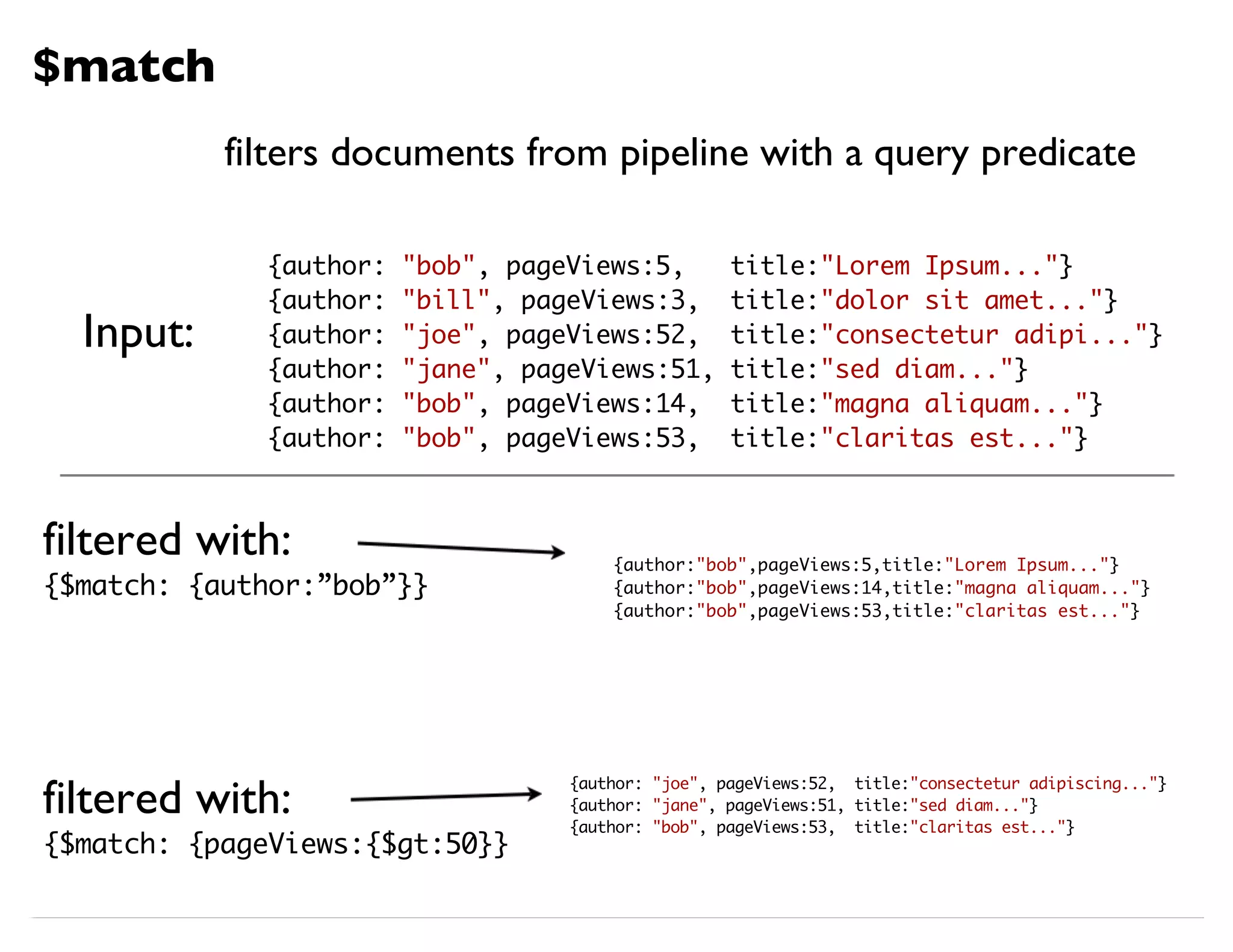
![$unwind { "_id" : ObjectId("4f...146"), "author" : "bob", "tags" :[ "fun","good","awesome"] } explode the “tags” array with: { $unwind : ”$tags” } { _id : ObjectId("4f...146"), author : "bob", tags:"fun"}, { _id : ObjectId("4f...146"), author : "bob", tags:"good"}, { _id : ObjectId("4f...146"), author : "bob", tags:"awesome"} produces output: Produce a new document for each value in an input array](https://image.slidesharecdn.com/mongodb-aggregation-130611150658-phpapp01/75/MongoDB-Aggregation-Framework-16-2048.jpg)
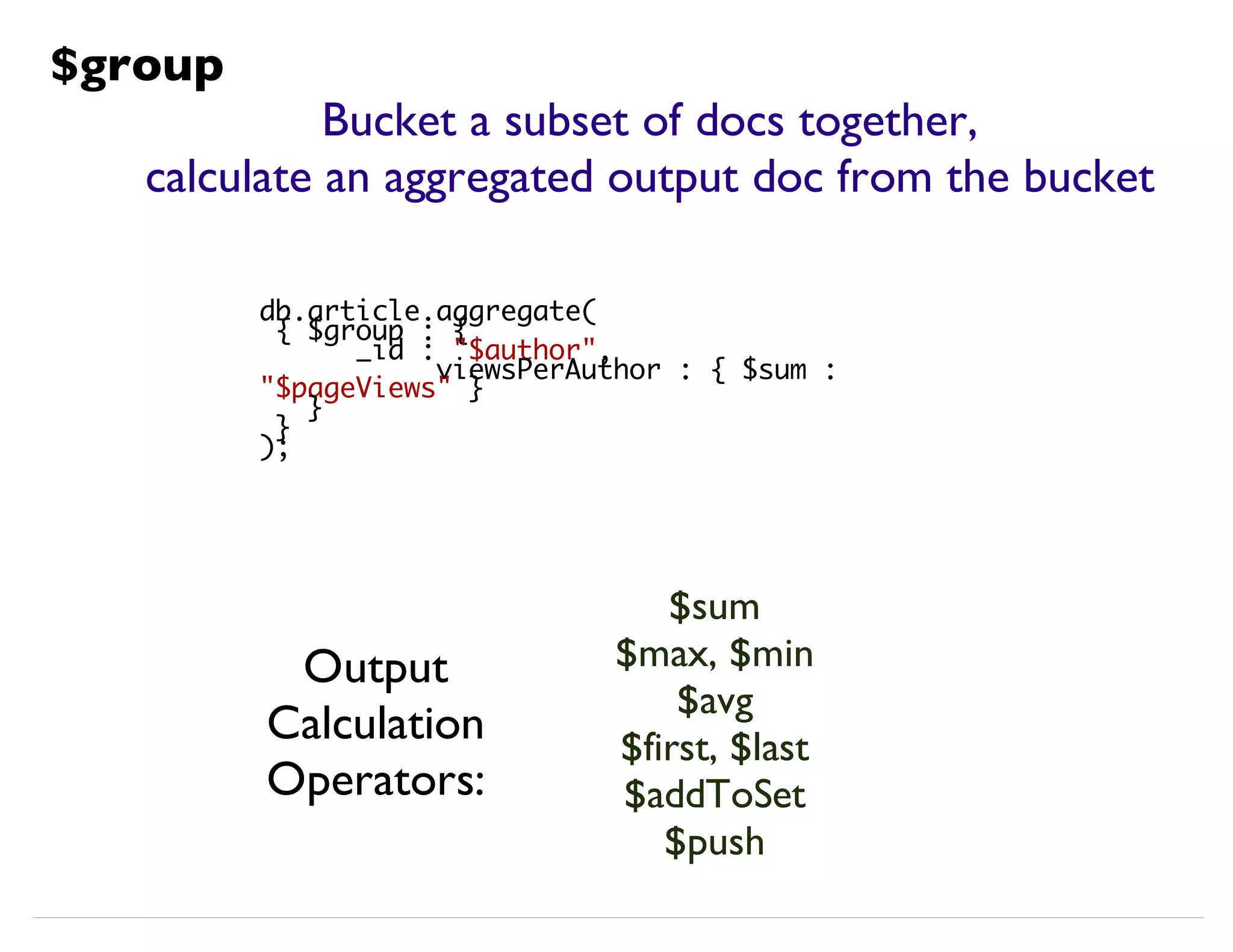
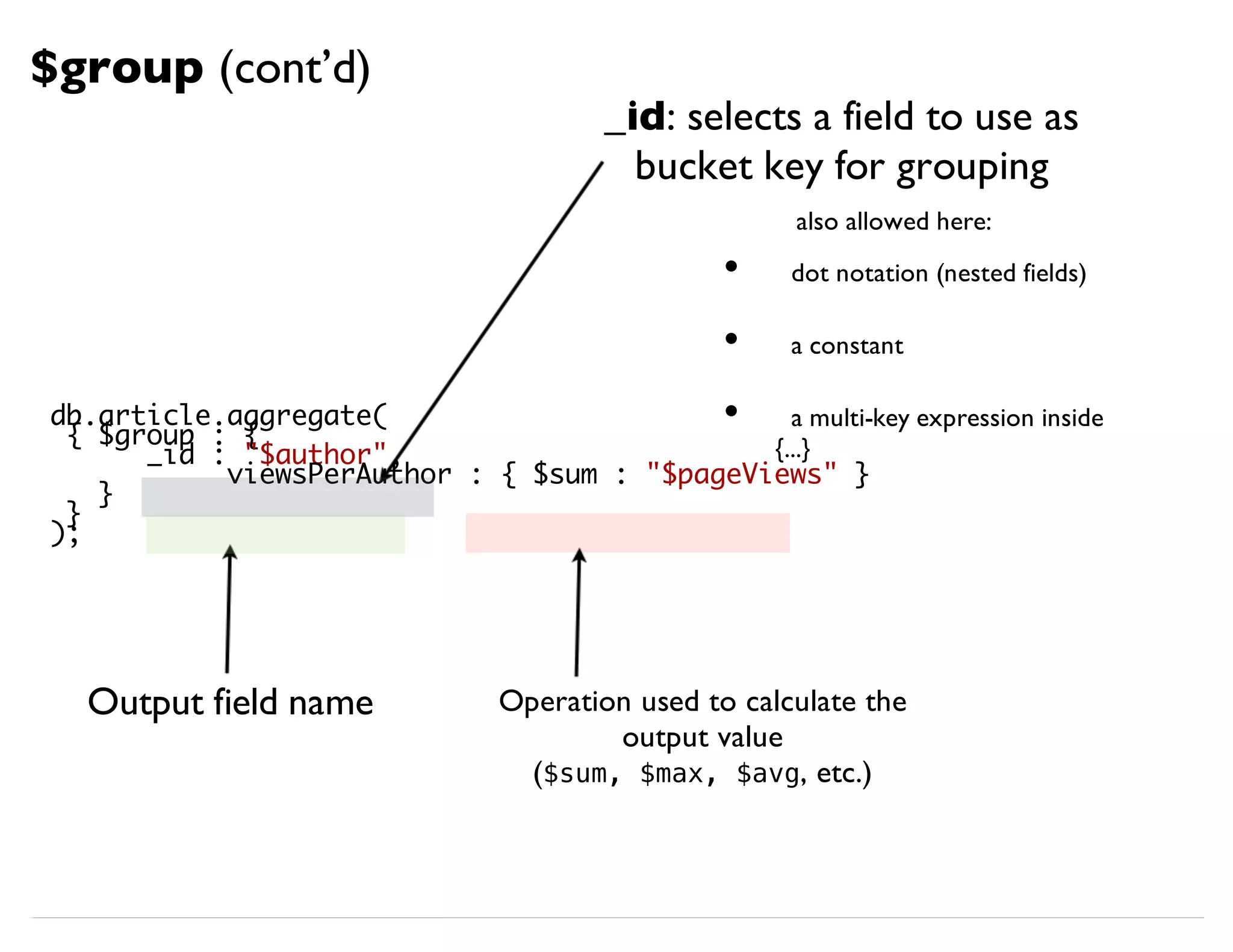
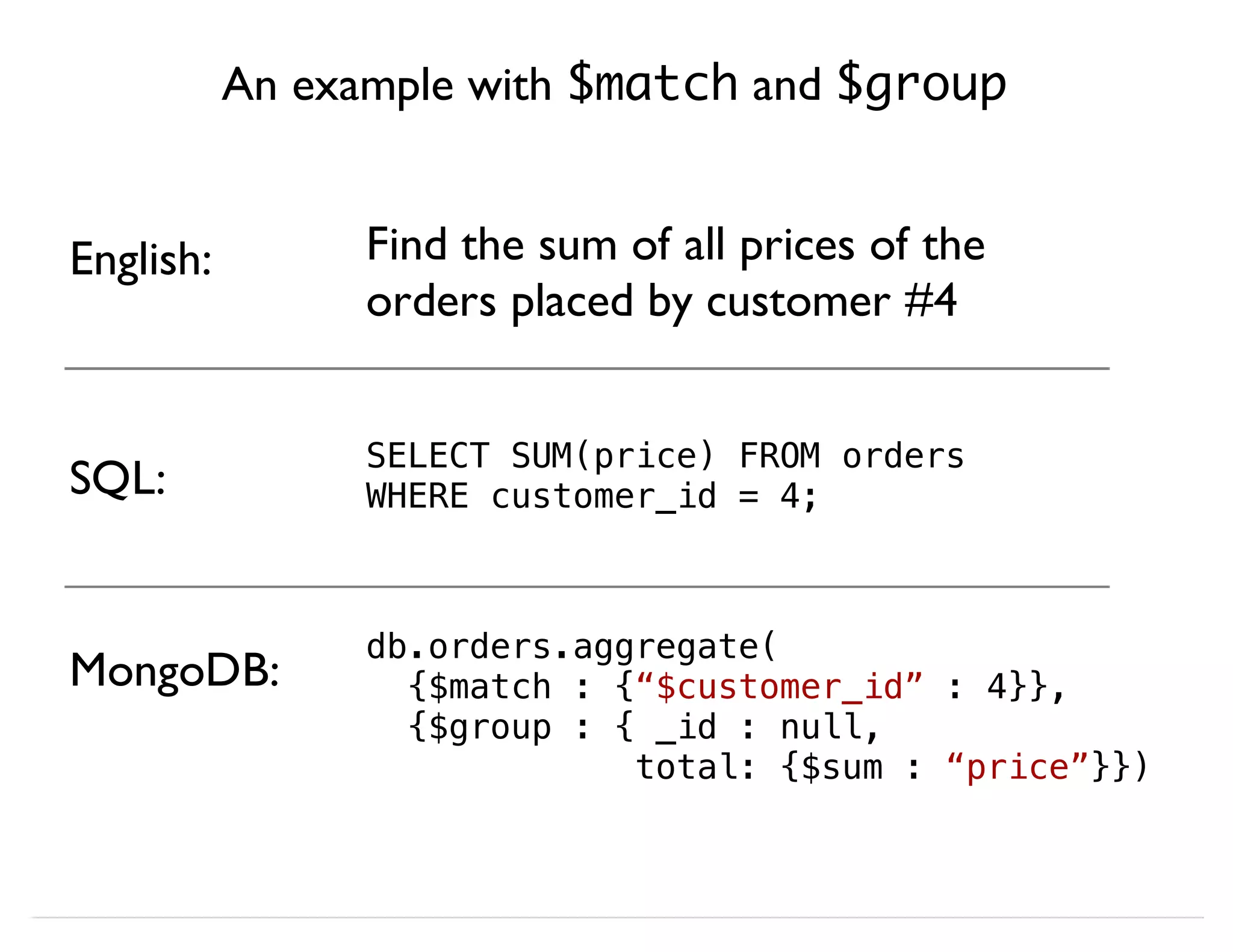
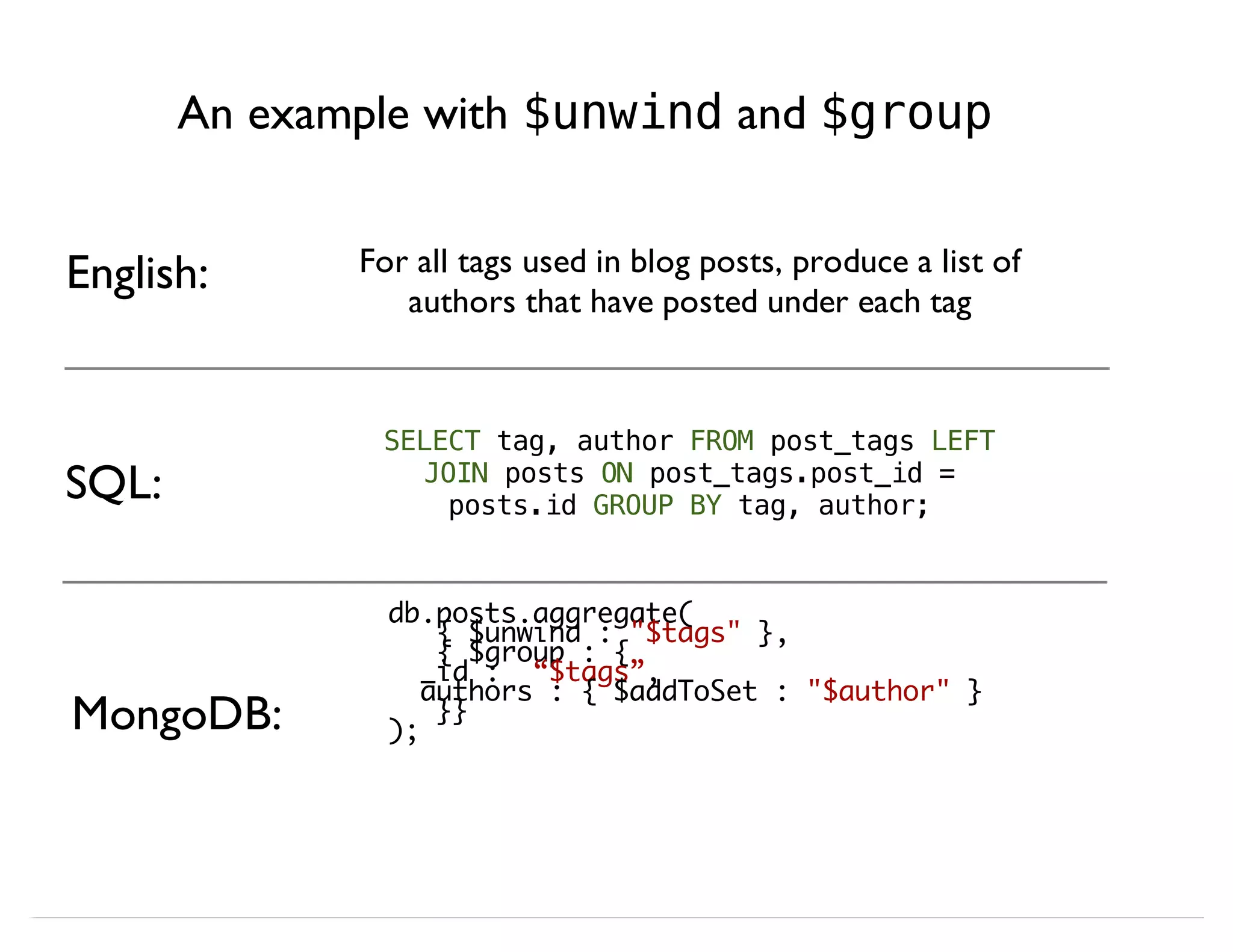
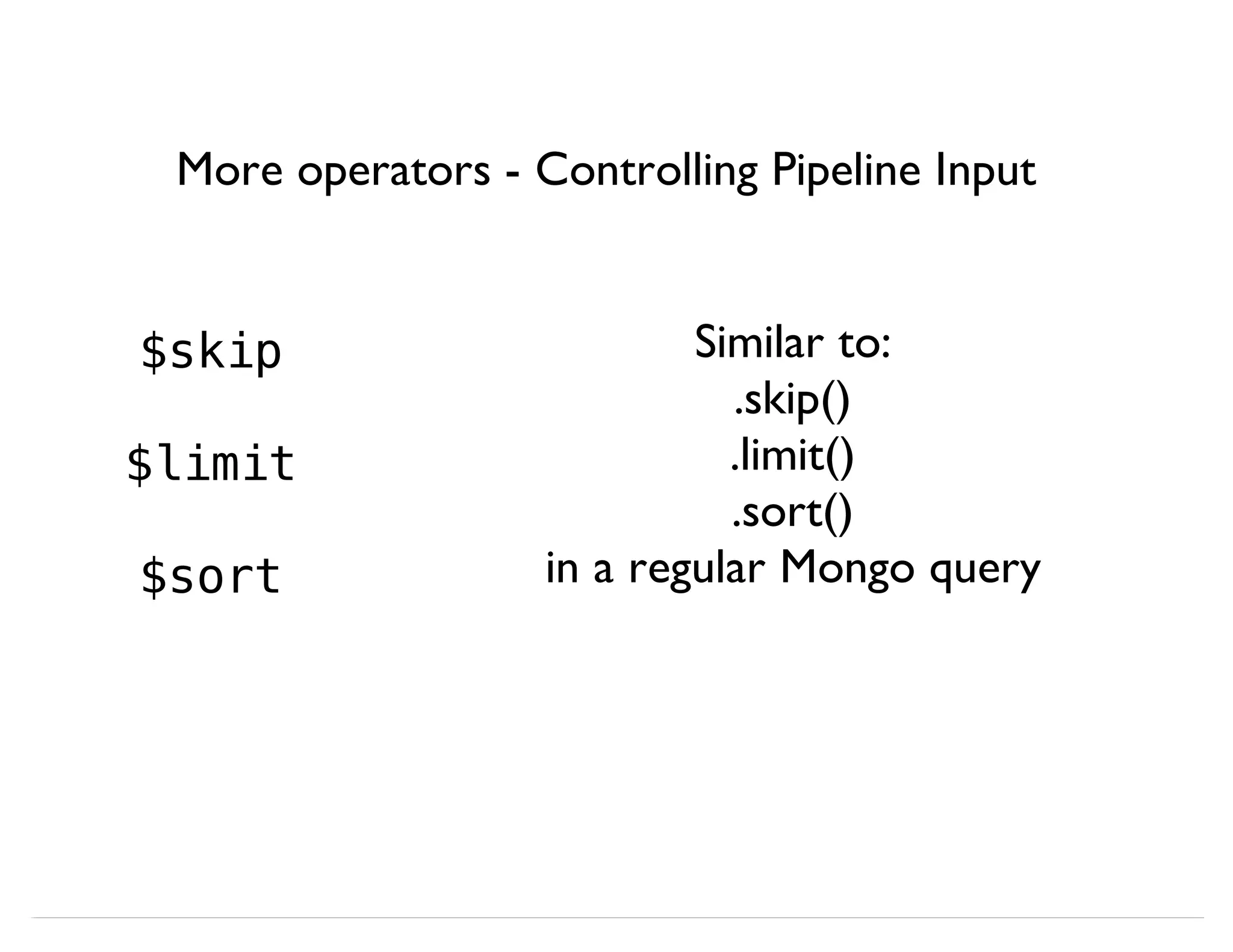
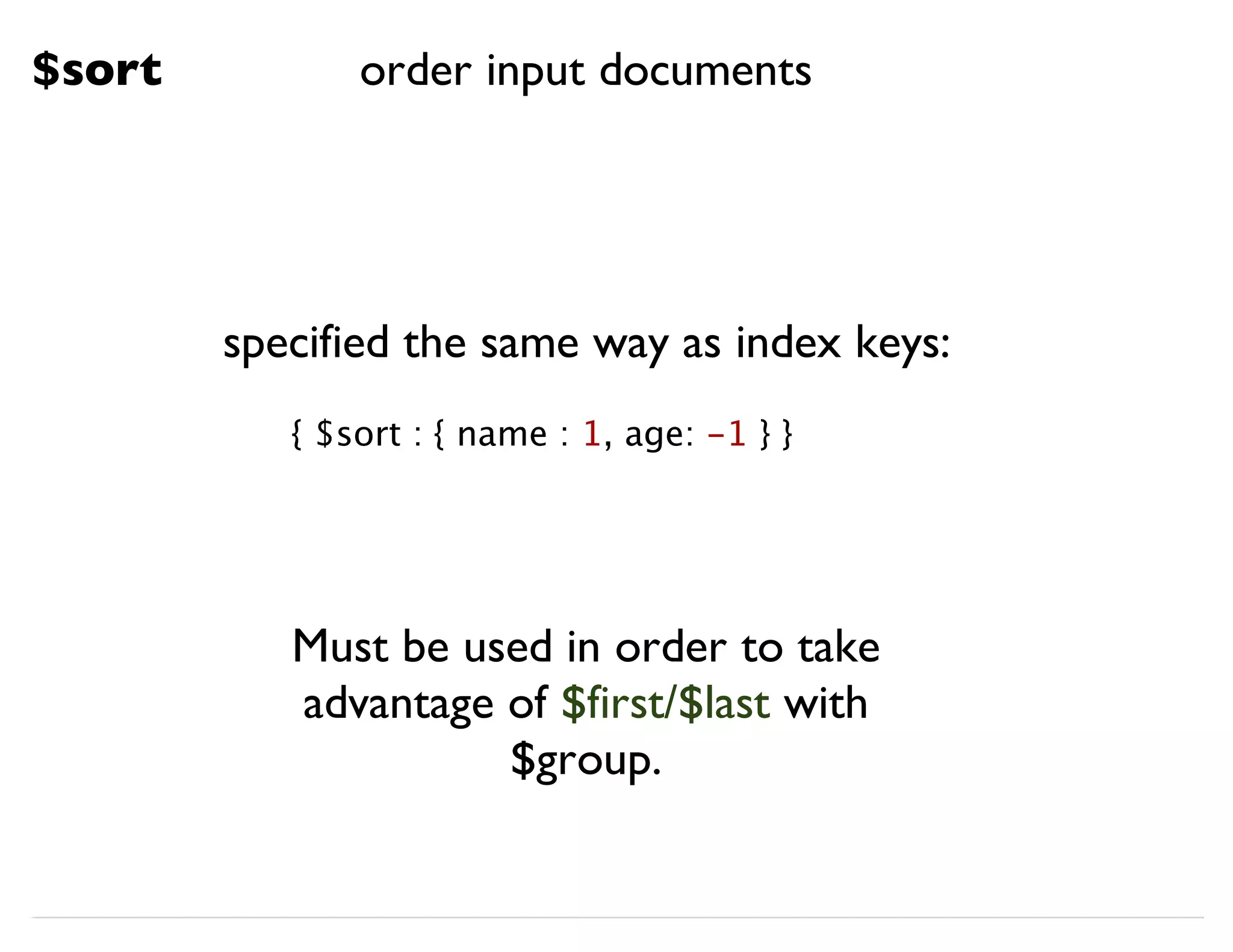
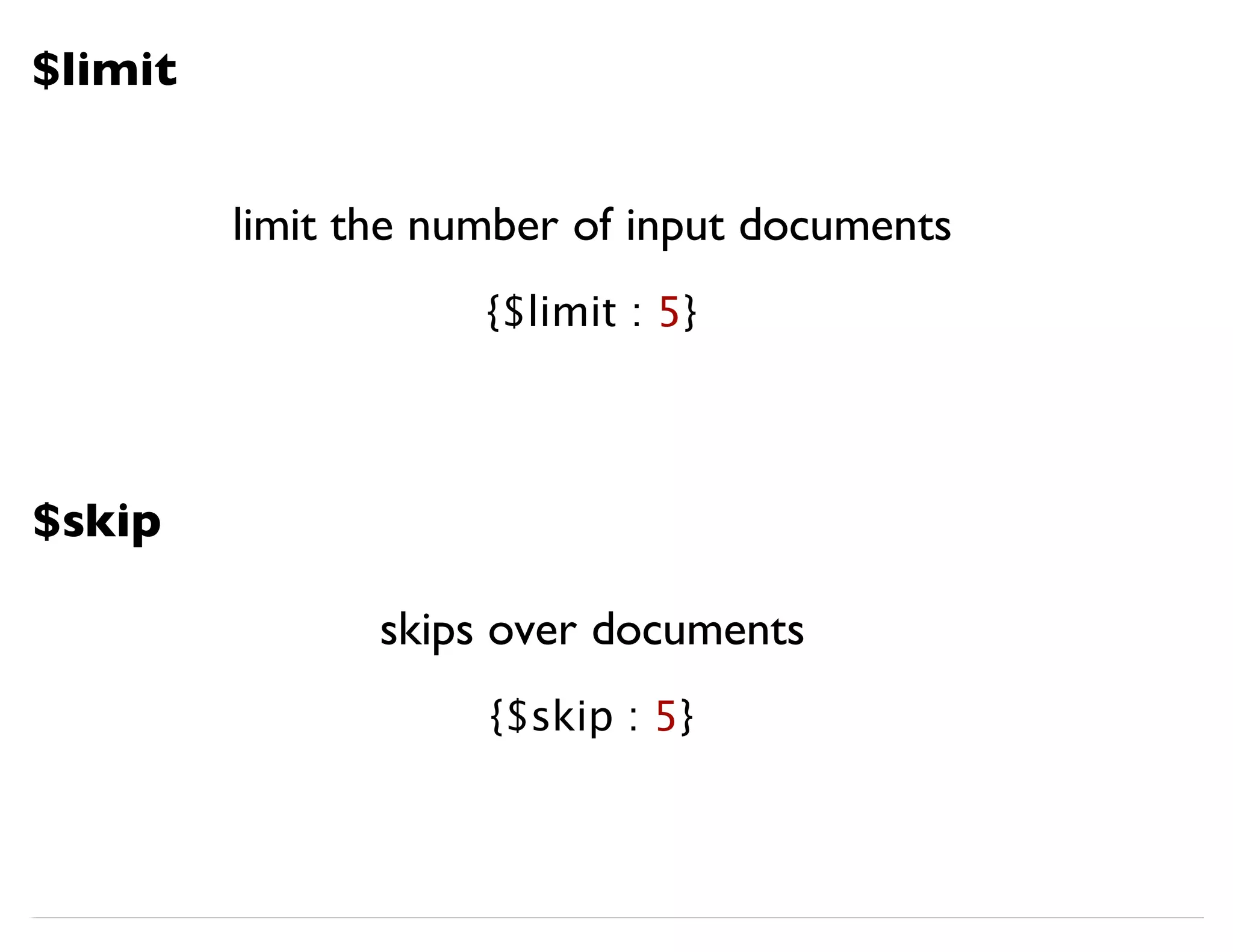
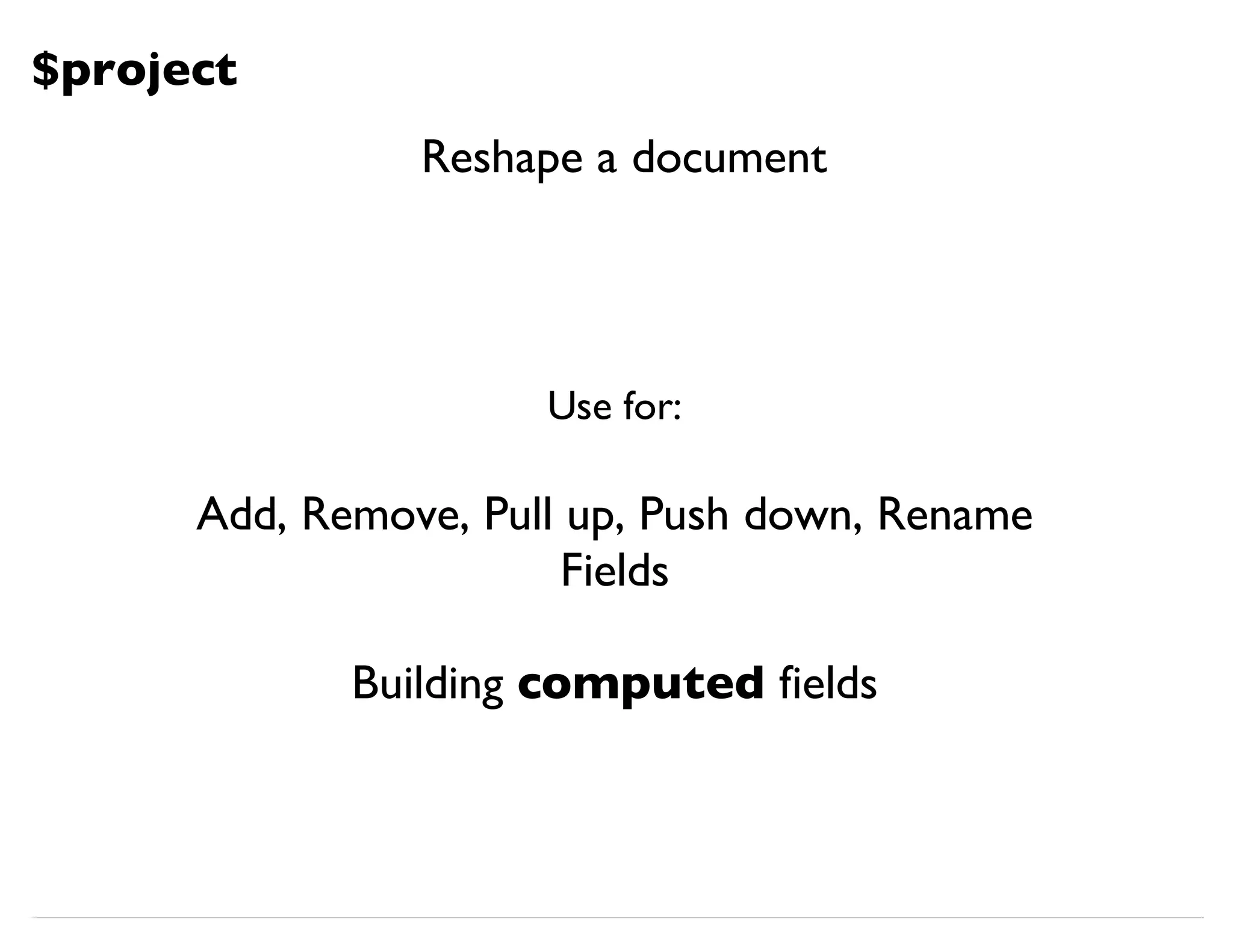
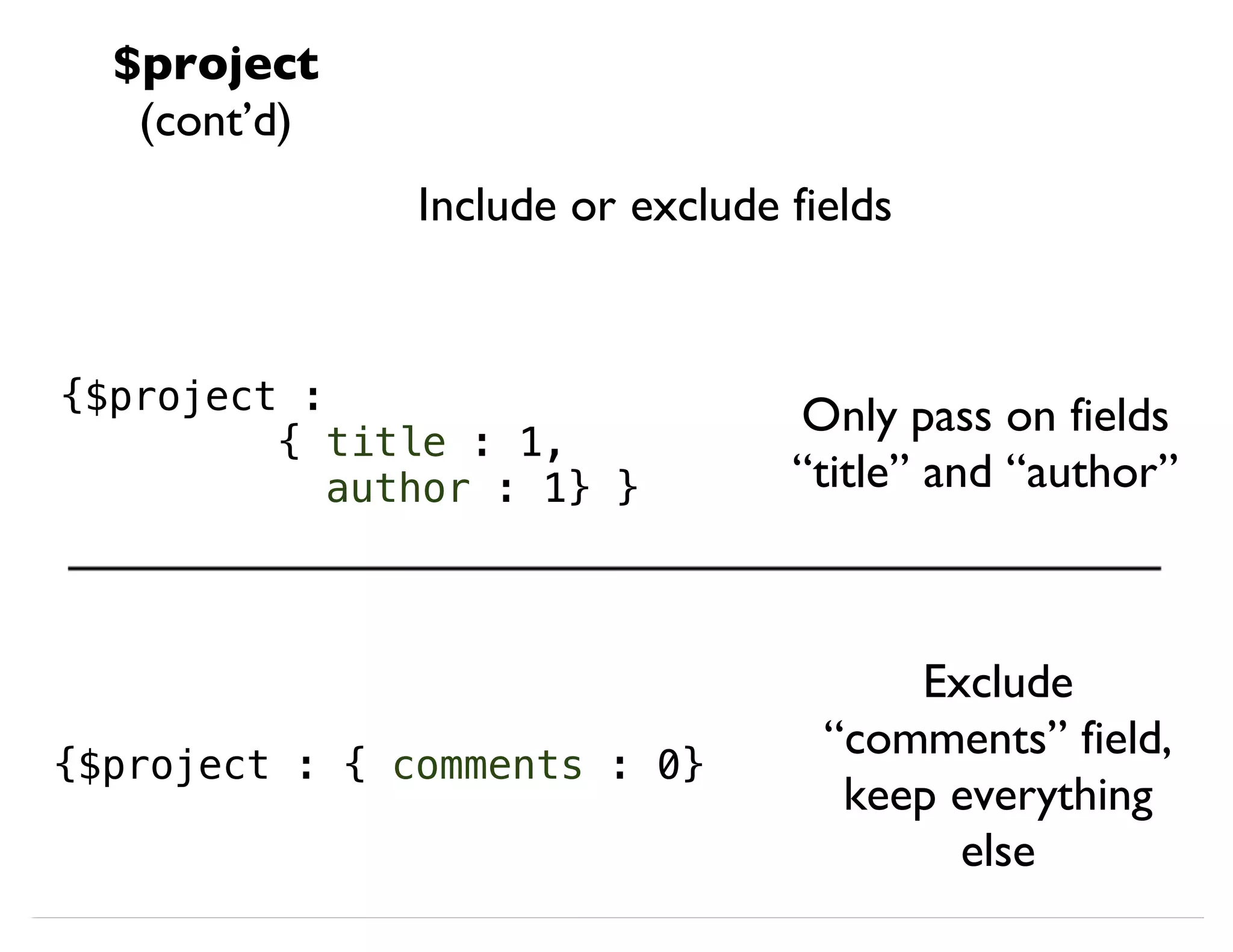
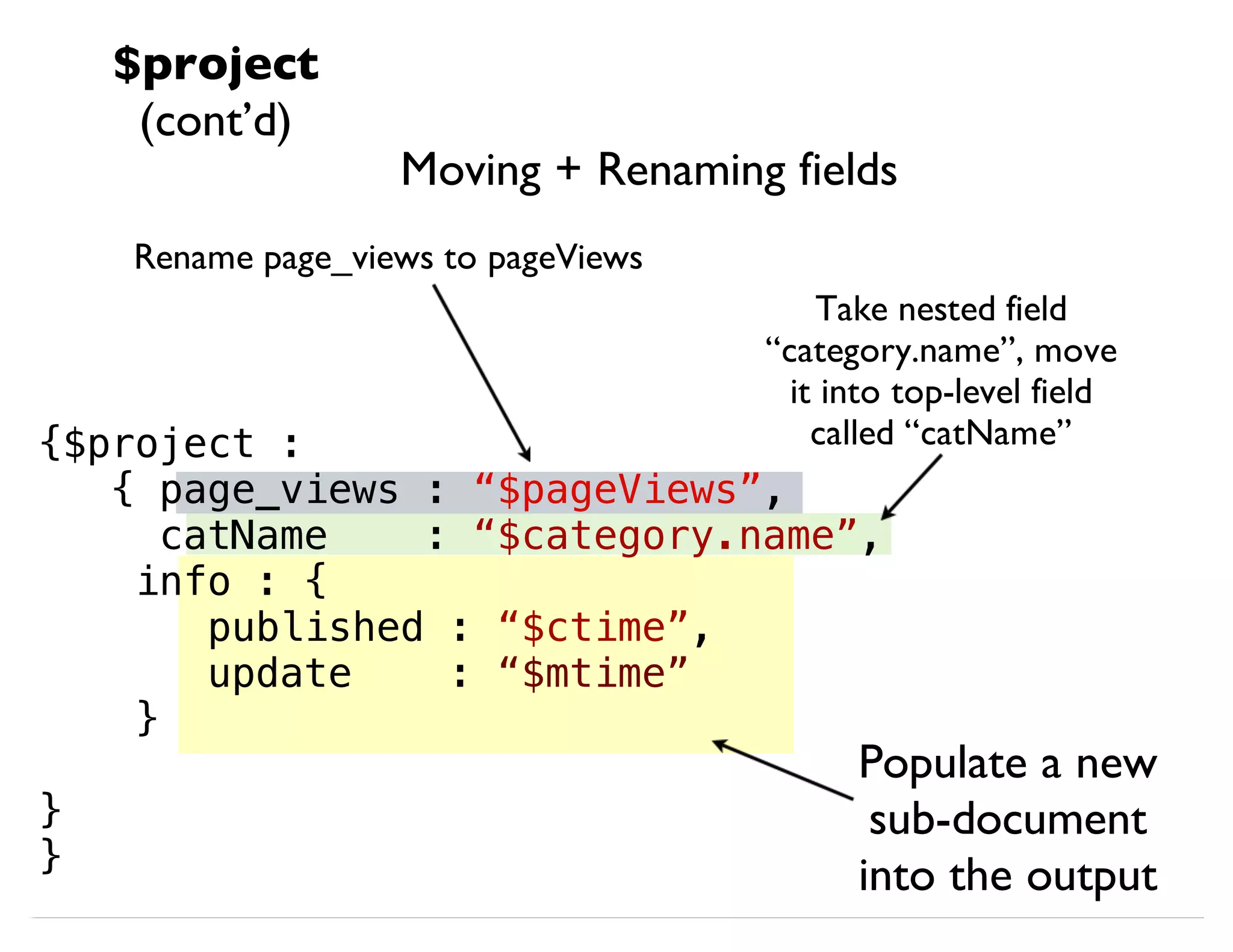
![db.article.aggregate( { $project : { name : 1, age_fixed : { $add:["$age", 2] } }} ); Building a Computed Field Output (computed field) Operands Expression $project (cont’d)](https://image.slidesharecdn.com/mongodb-aggregation-130611150658-phpapp01/75/MongoDB-Aggregation-Framework-27-2048.jpg)
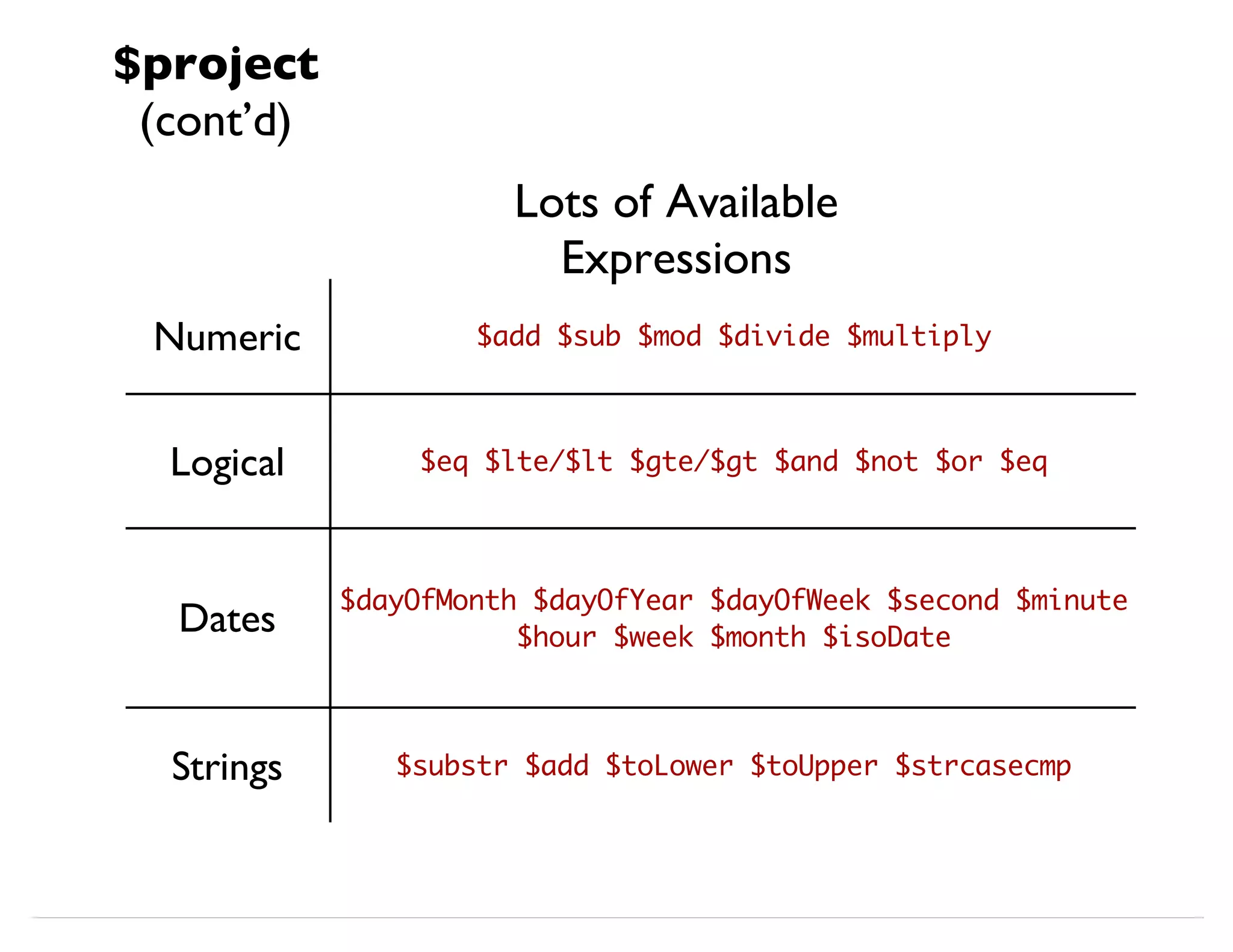
![Example: $sort → $limit → $project→ $group MongoDB: SQL: English: Of the most recent 1000 blog posts, how many were posted within each calendar year? SELECT YEAR(pub_time) as pub_year, COUNT(*) FROM (SELECT pub_time FROM posts ORDER BY pub_time desc) GROUP BY pub_year; db.test.aggregate( {$sort : {pub_time: -1}}, {$limit : 1000}, {$project:{pub_year:{$year:["$pub_time"]}}}, {$group: {_id:"$pub_year", num_year:{$sum:1}}} )](https://image.slidesharecdn.com/mongodb-aggregation-130611150658-phpapp01/75/MongoDB-Aggregation-Framework-29-2048.jpg)
